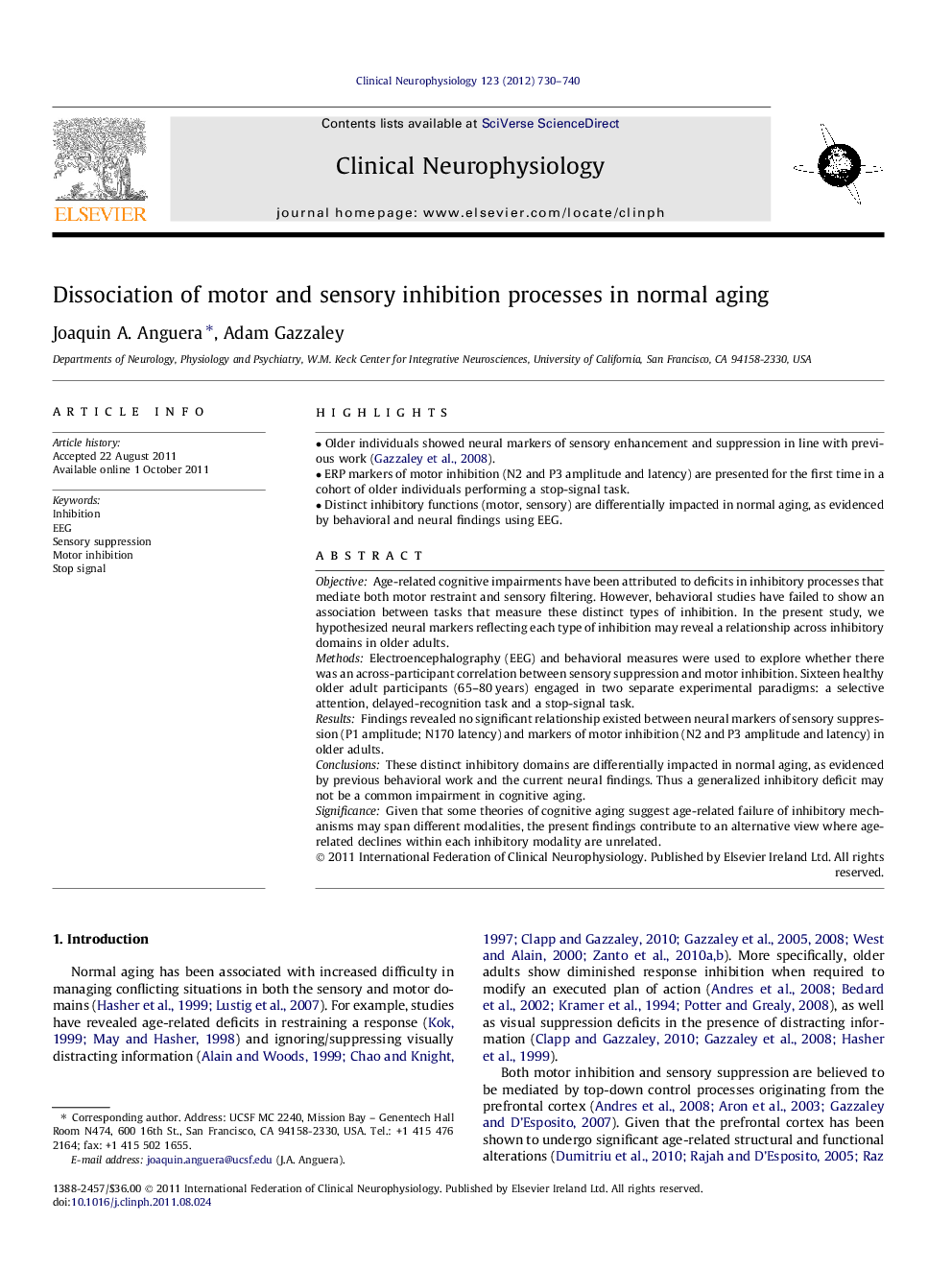| Article ID | Journal | Published Year | Pages | File Type |
|---|---|---|---|---|
| 3043604 | Clinical Neurophysiology | 2012 | 11 Pages |
ObjectiveAge-related cognitive impairments have been attributed to deficits in inhibitory processes that mediate both motor restraint and sensory filtering. However, behavioral studies have failed to show an association between tasks that measure these distinct types of inhibition. In the present study, we hypothesized neural markers reflecting each type of inhibition may reveal a relationship across inhibitory domains in older adults.MethodsElectroencephalography (EEG) and behavioral measures were used to explore whether there was an across-participant correlation between sensory suppression and motor inhibition. Sixteen healthy older adult participants (65–80 years) engaged in two separate experimental paradigms: a selective attention, delayed-recognition task and a stop-signal task.ResultsFindings revealed no significant relationship existed between neural markers of sensory suppression (P1 amplitude; N170 latency) and markers of motor inhibition (N2 and P3 amplitude and latency) in older adults.ConclusionsThese distinct inhibitory domains are differentially impacted in normal aging, as evidenced by previous behavioral work and the current neural findings. Thus a generalized inhibitory deficit may not be a common impairment in cognitive aging.SignificanceGiven that some theories of cognitive aging suggest age-related failure of inhibitory mechanisms may span different modalities, the present findings contribute to an alternative view where age-related declines within each inhibitory modality are unrelated.
► Older individuals showed neural markers of sensory enhancement and suppression in line with previous work (Gazzaley et al., 2008). ► ERP markers of motor inhibition (N2 and P3 amplitude and latency) are presented for the first time in a cohort of older individuals performing a stop-signal task. ► Distinct inhibitory functions (motor, sensory) are differentially impacted in normal aging, as evidenced by behavioral and neural findings using EEG.
